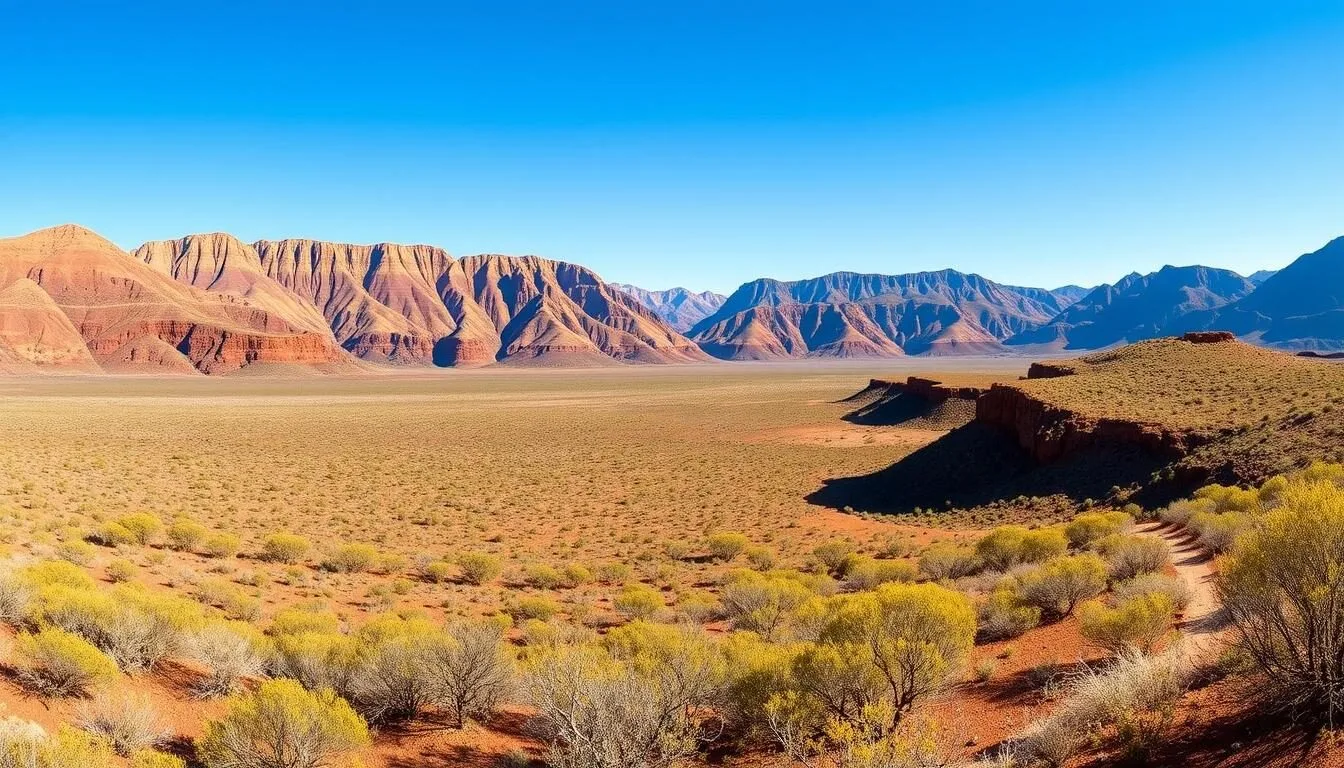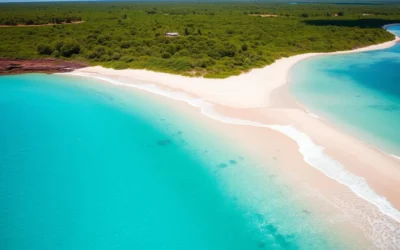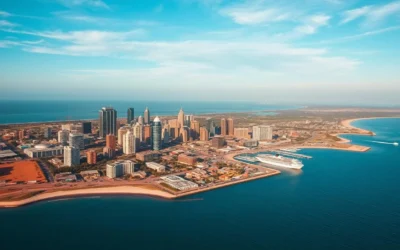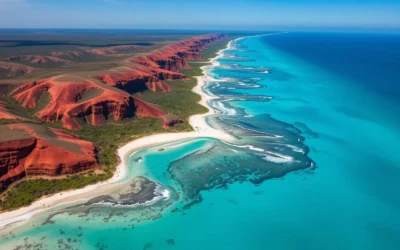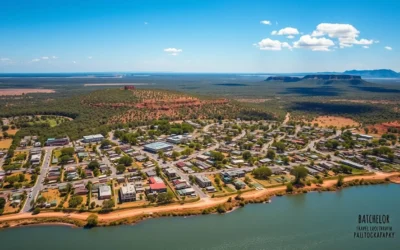Stretching over 644 kilometers across Central Australia, the Macdonnell Ranges are twice as old as the Grand Canyon, with some rock formations dating back an astonishing 350 million years. This ancient landscape, carved by time and the elements, offers travelers a glimpse into Earth’s geological history while providing some of Australia’s most spectacular outback experiences.
The Majestic Macdonnell Ranges
The Macdonnell Ranges are divided into two distinct sections – the West and East MacDonnell Ranges – both extending outward from Alice Springs like the arms of a giant. These ancient mountains harbor deep gorges, permanent waterholes, and significant Aboriginal cultural sites that tell the story of this land and its people.
Whether you’re an adventure seeker looking to hike the famous Larapinta Trail, a nature enthusiast hoping to spot rare desert wildlife, or a cultural explorer interested in Aboriginal heritage, the Macdonnell Ranges offer experiences that will leave you in awe of Australia’s Red Centre.
Getting There & Planning Your Journey
The gateway to the Macdonnell Ranges is Alice Springs, the heart of Australia’s Red Centre. Most visitors begin their exploration from this outback hub.
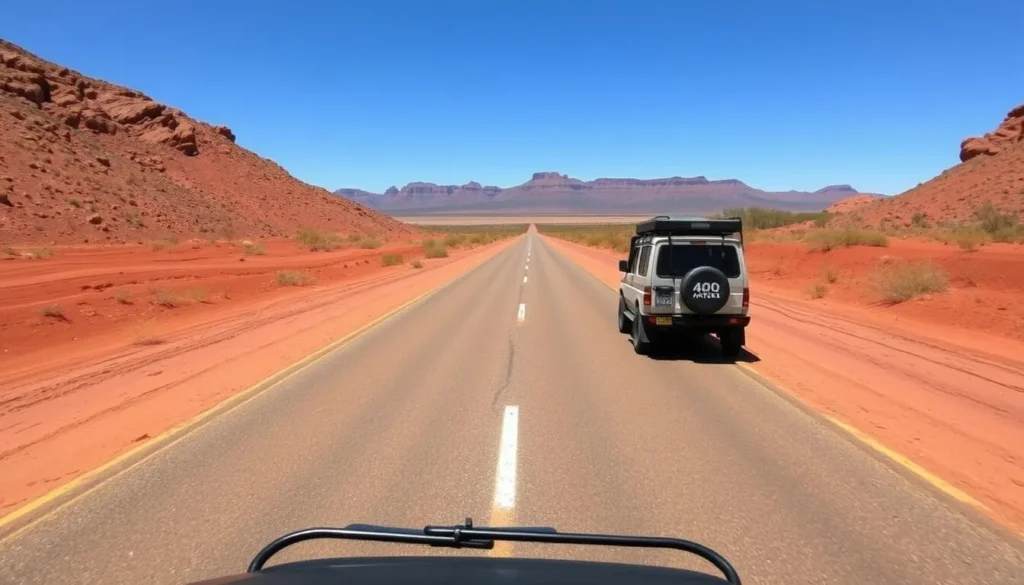
By Air
The most convenient way to reach the Macdonnell Ranges is to fly into Alice Springs Airport, which receives regular flights from major Australian cities including Sydney, Melbourne, Brisbane, Darwin, and Adelaide.
By Road
If you’re driving, Alice Springs is accessible via the Stuart Highway, which runs north-south through the center of Australia. From Alice Springs, the sealed Larapinta Drive (State Route 6) provides access to the West MacDonnell Ranges, while Ross Highway (State Route 2) leads to the East MacDonnell Ranges.
The Mereenie Loop
For a spectacular circular route, consider driving the Mereenie Loop, which connects the West MacDonnell Ranges with Kings Canyon and Uluru. Parts of this route require a 4WD vehicle and a permit, which can be purchased in Alice Springs.
Best Time to Visit & Weather Tips
The Macdonnell Ranges experience a desert climate with extreme temperature variations between seasons and even between day and night.
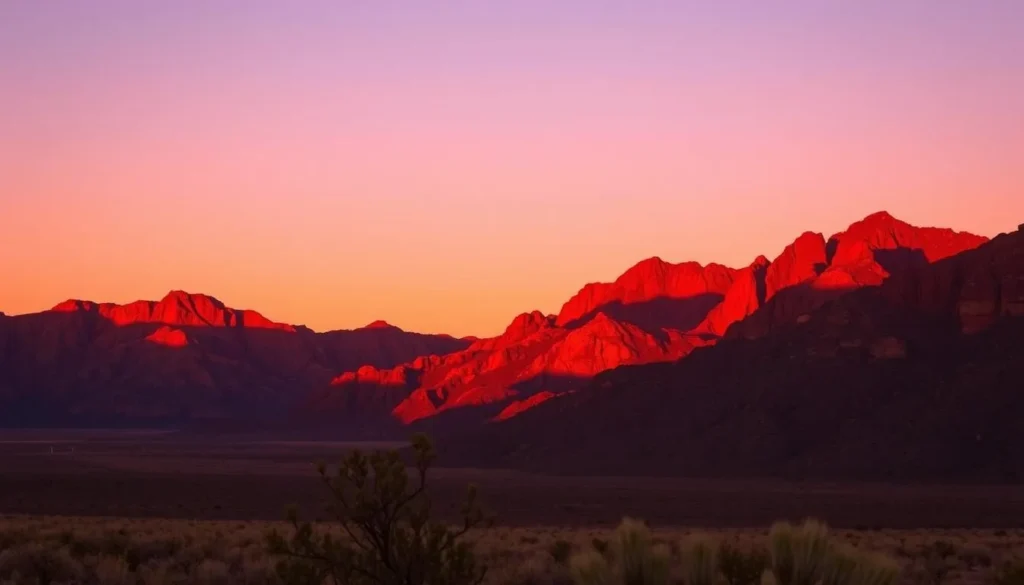
Peak Season (May to September)
The cooler months from May to September offer the most comfortable conditions for exploring the ranges, with daytime temperatures ranging from 20°C to 30°C (68°F to 86°F). Nights can be quite cold, sometimes dropping below 0°C (32°F), especially in June and July, so pack warm clothing for evenings.
Summer (December to February)
Summer brings extreme heat, with daytime temperatures regularly exceeding 40°C (104°F). If visiting during this time, plan activities for early morning or late afternoon, carry plenty of water, and be aware that some hiking trails may be closed during extreme heat.
Shoulder Seasons (March-April and October-November)
These transitional months can offer a good balance of fewer crowds and reasonable temperatures, though be prepared for variable conditions.
Weather Tip: The temperature difference between day and night in the desert can be dramatic. Always pack layers, even in summer, as evenings can cool down significantly.
Getting Around Locally
Having your own vehicle is essential for exploring the Macdonnell Ranges, as attractions are spread out and public transportation is limited.
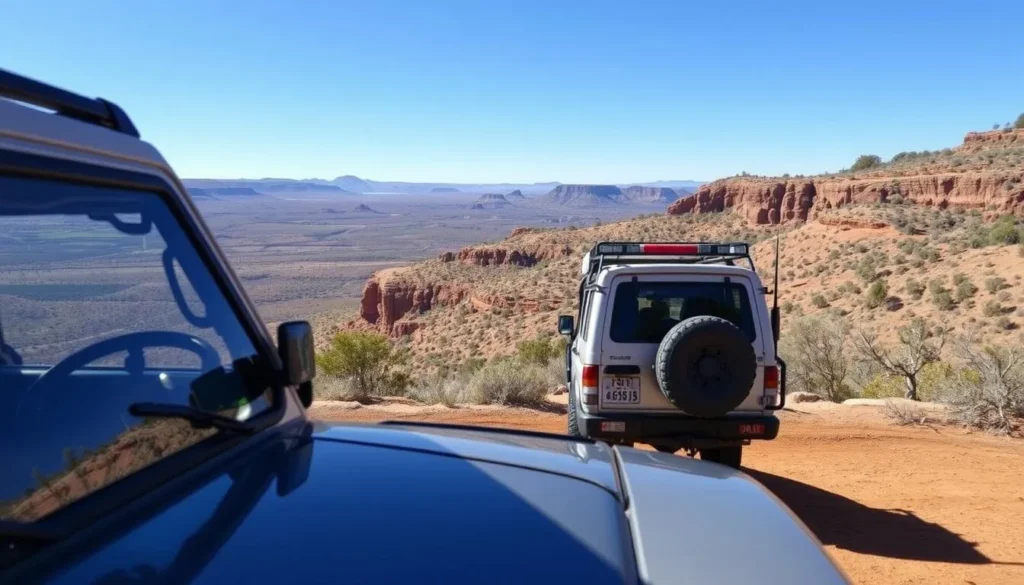
Self-Drive
A conventional 2WD vehicle is sufficient for visiting most attractions in the West and East MacDonnell Ranges, as the main roads are sealed. However, a 4WD vehicle is recommended for accessing more remote areas like Ruby Gap in the East MacDonnell Ranges or for driving the complete Mereenie Loop.
Guided Tours
If you prefer not to drive, numerous tour operators in Alice Springs offer day trips and multi-day excursions to the ranges. These tours often include transportation, guided walks, and insights into the natural and cultural significance of the area.
Distances to Note
Be aware that attractions in the Macdonnell Ranges are spread out. Here are some key distances from Alice Springs:
| Destination | Distance from Alice Springs | Approximate Drive Time |
| Simpsons Gap | 18 km | 20 minutes |
| Standley Chasm | 50 km | 45 minutes |
| Ellery Creek Big Hole | 80 km | 1 hour |
| Ormiston Gorge | 135 km | 1.5 hours |
| Glen Helen Gorge | 132 km | 1.5 hours |
| Emily Gap (East) | 15 km | 15 minutes |
| Trephina Gorge (East) | 85 km | 1 hour |
Where to Stay
Accommodation options in and around the Macdonnell Ranges vary from comfortable hotels in Alice Springs to rustic camping under the stars.
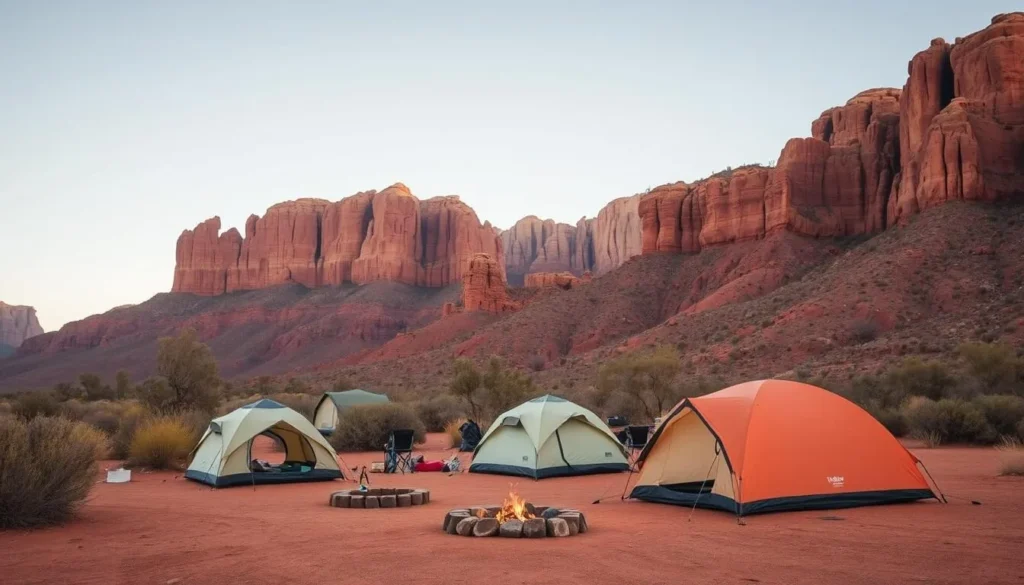
Alice Springs
Most visitors base themselves in Alice Springs, which offers a range of accommodation options from luxury hotels to budget hostels. Staying in town gives you access to restaurants, shops, and services while still being within easy driving distance of both the East and West MacDonnell Ranges.
Glen Helen
For those wanting to stay within the ranges themselves, Glen Helen offers the only resort-style accommodation in the West MacDonnell Ranges. The property features motel rooms, a restaurant, and a large campground on the banks of the Finke River.
Note: As of 2023, the accommodation complex at Glen Helen is undergoing renovations. Check current status before planning your stay.
Camping
Numerous campgrounds are scattered throughout both the East and West MacDonnell Ranges. Popular camping spots include:
- Ellery Creek Big Hole
- Ormiston Gorge
- Redbank Gorge
- Trephina Gorge (East MacDonnell)
- Ruby Gap (East MacDonnell, 4WD access only)
Most campgrounds in the national parks have basic facilities including toilets, picnic tables, and fire pits. Fees apply, and it’s advisable to bring your own drinking water.
Alternative Accommodations
In the East MacDonnell Ranges, Ross River Resort and Hale River Homestead offer additional accommodation options ranging from camping to ensuite cabins.
Dining & Local Cuisine
Dining options within the Macdonnell Ranges themselves are limited, so planning ahead is essential.

Within the Ranges
Glen Helen Resort has the only restaurant within the West MacDonnell Ranges, serving breakfast, lunch, and dinner with a focus on hearty outback fare. The restaurant offers stunning views of the gorge and is a popular spot for sunset drinks.
Self-Catering
Most visitors to the ranges bring their own food supplies, especially if camping. Alice Springs has several supermarkets where you can stock up before heading out. Portable gas stoves are recommended as fire bans are common during the dry season.
Bush Tucker Experiences
For a unique dining experience, consider booking a bush tucker tour in Alice Springs before heading to the ranges. These tours introduce you to native Australian ingredients and traditional Aboriginal food preparation techniques.
Alice Springs Dining
Alice Springs offers a surprisingly diverse dining scene, with everything from casual cafes to fine dining restaurants. Don’t miss the opportunity to try some local specialties like:
- Kangaroo steaks
- Barramundi (Australian fish)
- Quandong (native peach) desserts
- Damper (traditional Australian bread)
Attractions, Sightseeing & Activities
The Macdonnell Ranges offer a wealth of natural attractions and activities for visitors to enjoy.
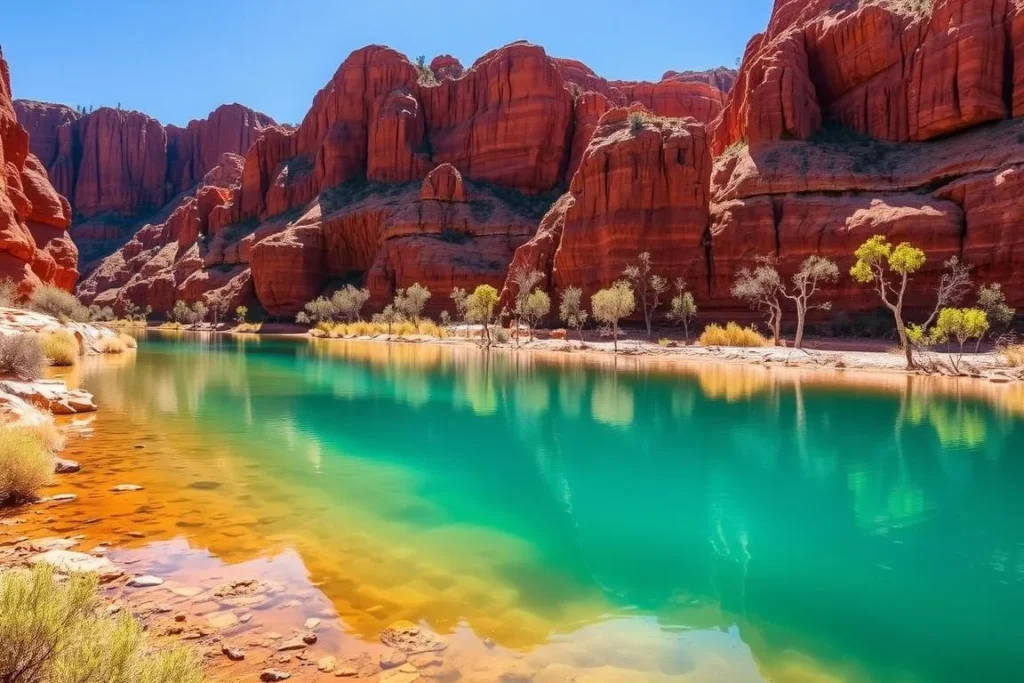
West MacDonnell Ranges Highlights
The West MacDonnell Ranges (Tjoritja) stretch 161km west of Alice Springs and contain some of the most spectacular scenery in Central Australia.
Simpsons Gap
Just 18km from Alice Springs, Simpsons Gap features a prominent gap in the ranges and is known for its resident population of black-footed rock wallabies, best spotted in the early morning or late afternoon.
Standley Chasm (Angkerle Atwatye)
This narrow chasm is particularly spectacular around midday when the sun illuminates the walls, creating a fiery glow. The traditional Aboriginal name means “Gap of Water.”
Ellery Creek Big Hole
A popular swimming spot, this permanent waterhole is one of the most picturesque in the ranges and offers a refreshing respite from the heat.

Ormiston Gorge
Perhaps the most impressive of all the gorges, Ormiston features a permanent waterhole surrounded by towering red walls. The Ghost Gum Walk offers spectacular views of the gorge.
Glen Helen Gorge
Where the Finke River cuts through the ranges, Glen Helen Gorge offers beautiful scenery and another permanent waterhole. The area is culturally significant to the Western Arrernte Aboriginal people.
Redbank Gorge
Located at the western end of the ranges near Mt Sonder, this narrow gorge has a permanent waterhole that’s perfect for a refreshing swim after a hike.
Ochre Pits
These colorful cliffs have been used by Aboriginal people for thousands of years as a source of ochre for ceremonies and rock art. The different colored layers create a striking natural palette.

East MacDonnell Ranges Highlights
Less visited but equally impressive, the East MacDonnell Ranges extend 150km east of Alice Springs and offer a mix of natural beauty and historical sites.
Emily Gap (Anthwerrke)
Just 15km from Alice Springs, this gap features significant Aboriginal rock art depicting the caterpillar dreaming story, which explains the creation of the ranges in Aboriginal tradition.
Trephina Gorge
Known for its sheer quartzite cliffs and River Red Gum lined watercourses, Trephina Gorge offers several walking trails and a peaceful campground.
John Hayes Rockhole
Accessible by 4WD or a challenging hike from Trephina Gorge, this secluded waterhole is perfect for a swim when filled after rain.
N’Dhala Gorge
Home to over 6,000 ancient petroglyphs (rock carvings), this culturally significant site requires a 4WD to access but rewards visitors with a glimpse into Aboriginal history dating back thousands of years.
Arltunga Historical Reserve
Central Australia’s first European settlement, this former gold mining town offers a fascinating glimpse into the harsh realities of frontier life. The restored police station and other buildings can be explored.
Ruby Gap
At the far eastern end of the ranges, this remote 4WD-only destination features a beautiful gorge where miners once mistook garnets for rubies. The riverbed still glitters with these semi-precious stones.
Cultural Significance & Aboriginal Heritage
The Macdonnell Ranges hold deep cultural significance for the Arrernte Aboriginal people, who have lived in this region for tens of thousands of years.
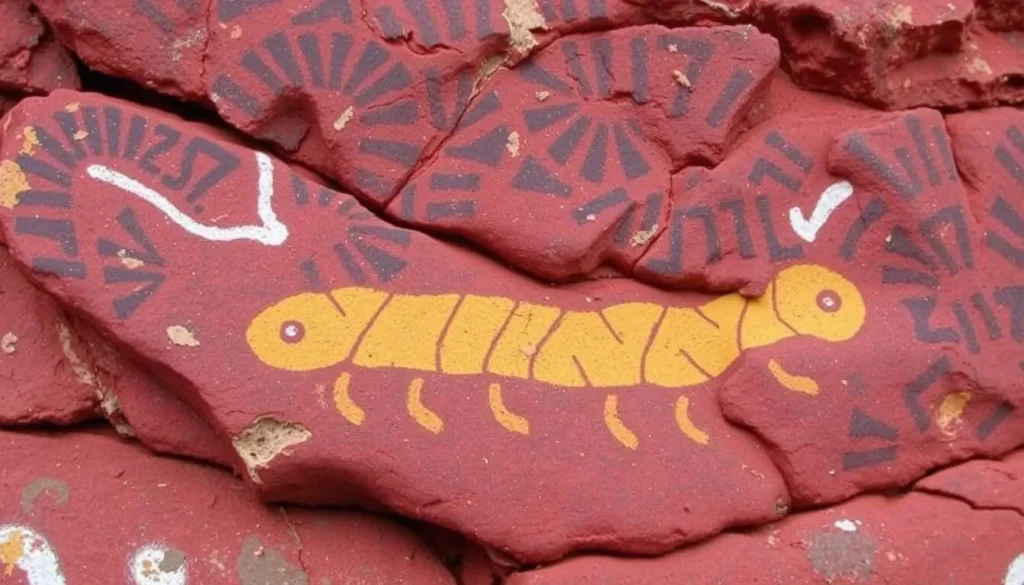
Dreamtime Stories
According to Arrernte tradition, the ranges were created by giant caterpillars called the Yeperenye, Ntyarlke, and Utnerrengatye, who came from different directions and converged at what is now Alice Springs. This “Caterpillar Dreaming” story is depicted in rock art at Emily Gap.
Sacred Sites
Many locations throughout the ranges are sacred sites for Aboriginal people. These include:
- Emily Gap (Anthwerrke) – A significant site in the caterpillar dreaming story
- Jessie Gap (Atherrke) – Another important caterpillar dreaming site
- Standley Chasm (Angkerle Atwatye) – Meaning “Gap of Water” in the Arrernte language
- Corroboree Rock – A sacred ceremonial site
Rock Art and Petroglyphs
The ranges contain numerous examples of Aboriginal rock art, with some of the most accessible sites being Emily Gap and N’Dhala Gorge, where thousands of petroglyphs (rock engravings) can be seen.
Cultural Experiences
To deepen your understanding of Aboriginal culture and connection to the land, consider joining a cultural tour led by Aboriginal guides in Alice Springs before exploring the ranges.
Respectful Visitation: When visiting culturally significant sites, please show respect by staying on marked paths, not touching rock art, and following any specific guidelines posted at each location.
Outdoor Adventures & Activities
The Macdonnell Ranges offer endless opportunities for outdoor enthusiasts, from casual walks to multi-day treks.
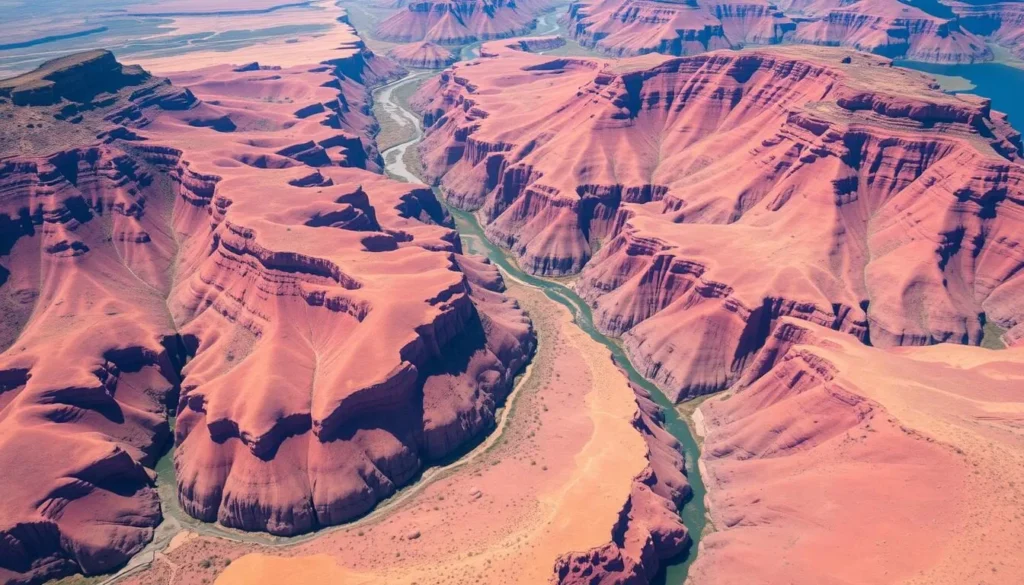
Hiking & Walking Trails
The ranges offer walks for all fitness levels, from easy strolls to challenging hikes.
The Larapinta Trail
This world-renowned long-distance walking track stretches 223km along the spine of the West MacDonnell Ranges. Divided into 12 sections, it can be tackled as day walks or as a complete multi-week adventure. The trail offers some of the most spectacular hiking in Australia, with facilities including water tanks and basic campsites along the route.
Short Walks
For those with limited time or hiking experience, numerous short walks provide access to the ranges’ highlights:
| Walk | Location | Distance | Difficulty |
| Ghost Gum Walk | Ormiston Gorge | 2.5km loop | Moderate |
| Woodland Trail | Simpsons Gap | 1.5km loop | Easy |
| Rim Walk | Trephina Gorge | 2km loop | Moderate |
| Dolomite Walk | Ellery Creek | 3km loop | Moderate |
| Arankaia Walk | Palm Valley | 2km return | Easy-Moderate |
Swimming
The permanent waterholes in the ranges provide welcome relief from the heat. Popular swimming spots include Ellery Creek Big Hole, Ormiston Gorge, and Glen Helen Gorge. Be aware that the water can be extremely cold, even in summer, due to the depth of the waterholes and limited sun exposure.
Wildlife Watching
The ranges are home to a surprising diversity of wildlife adapted to the harsh desert conditions. Keep an eye out for:
- Black-footed rock wallabies (especially at Simpsons Gap)
- Dingoes
- Perentie (Australia’s largest goanna)
- Wedge-tailed eagles
- Budgerigars and zebra finches
- Desert frogs (after rain)
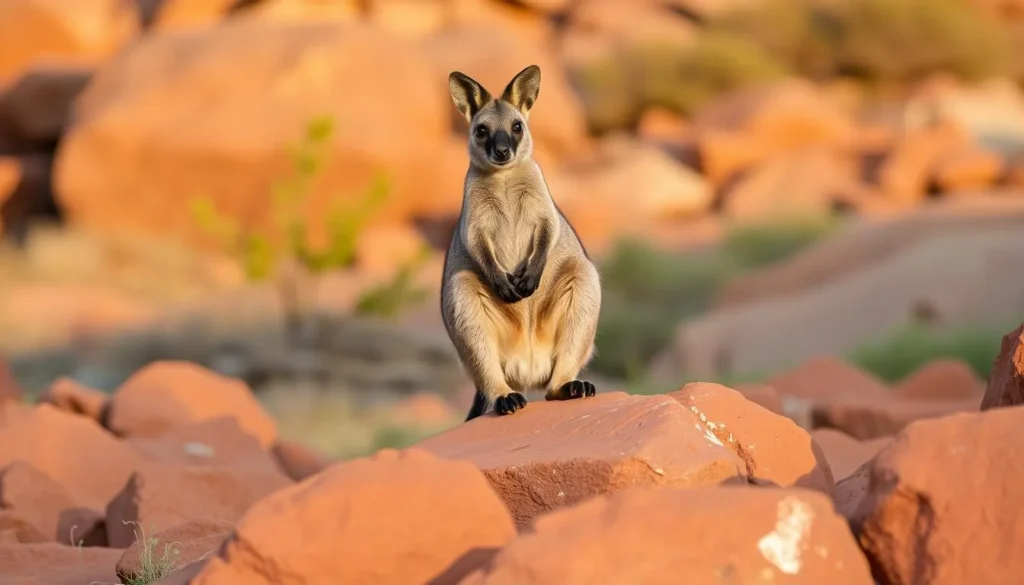
4WD Adventures
Several areas in the ranges are accessible only by 4WD, offering more remote experiences for adventurous travelers. Popular 4WD destinations include:
- Palm Valley in Finke Gorge National Park
- Ruby Gap in the East MacDonnell Ranges
- The complete Mereenie Loop Road
Photography
The dramatic landscapes, abundant wildlife, and ever-changing light make the Macdonnell Ranges a photographer’s paradise. The best light for photography is typically in the early morning and late afternoon when the ranges glow with intense red and orange hues.
Practical Travel Tips
Proper preparation is essential for a safe and enjoyable visit to the Macdonnell Ranges.
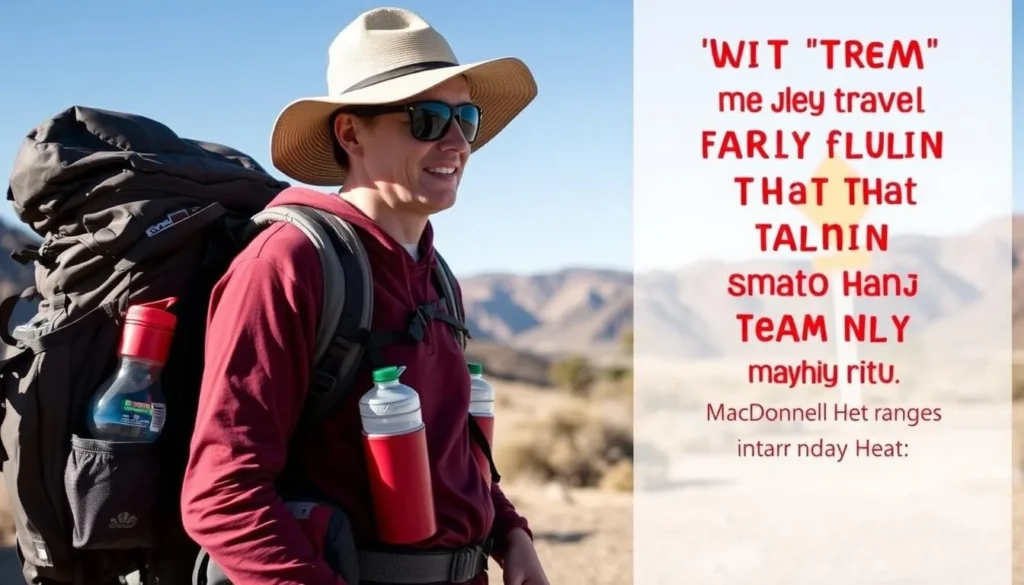
Park Passes
Entry into the West and East MacDonnell Ranges requires an NT Parks Pass, which is separate from passes for other national parks like Kakadu or Uluru-Kata Tjuta. Passes can be purchased online or at various locations in Alice Springs.
Water and Supplies
Carry plenty of drinking water at all times – at least 2-3 liters per person for day trips and more for hiking. There are limited facilities within the ranges, so stock up on food, fuel, and other supplies in Alice Springs before heading out.
Sun Protection
The Central Australian sun is extremely intense. Wear a wide-brimmed hat, sunglasses, and sunscreen, and consider long-sleeved shirts and pants for additional protection. Plan strenuous activities for the cooler parts of the day.
Communications
Mobile phone coverage is limited or non-existent in many parts of the ranges. Consider hiring a satellite phone or personal locator beacon for remote areas, especially if hiking the Larapinta Trail or exploring by 4WD.
Safety
Always let someone know your plans before heading into remote areas. If hiking, carry a first aid kit and be aware of symptoms of heat stress and dehydration. In the event of a breakdown, stay with your vehicle.
Fire Bans: Total fire bans are common during the dry season. Check current restrictions before lighting any campfires or using portable stoves.
Respect for Country
The Macdonnell Ranges are not only a natural wonder but also a culturally significant landscape. Show respect by:
- Staying on marked trails
- Taking all rubbish with you
- Not disturbing or removing rocks, plants, or wildlife
- Observing any access restrictions to sacred sites
Experience the Timeless Beauty of the Macdonnell Ranges
The Macdonnell Ranges offer a uniquely Australian experience where ancient geology, rich Aboriginal culture, and stunning natural beauty combine to create an unforgettable destination. Whether you’re swimming in secluded waterholes, hiking along dramatic ridgelines, or simply watching the changing colors of the ranges at sunset, this remarkable landscape will leave you with a deeper appreciation for Australia’s Red Centre.
With proper planning and respect for both the natural environment and cultural heritage, your journey through the Macdonnell Ranges will be a highlight of any Australian adventure. The ancient mountains are waiting to share their stories – it’s time to start your outback odyssey.
